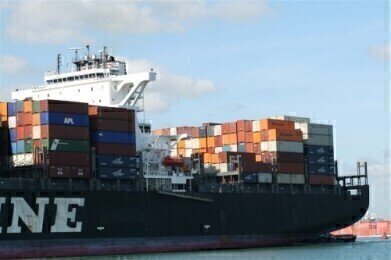-
 Regulations hope to help the shipping industry reduce emissions
Regulations hope to help the shipping industry reduce emissions
Fuel for thought
New California regulations aim to reduce emissions
May 09 2013
In January 2014 California is implementing new regulations in an effort to reduce emissions produced by cargo ships. The California Air Resources Board will make the state the world's first government body to make cargo ships shut off their engines at major ports.
Container fleets will face fines if they do not plug ships in to use electricity to power at least 50 per cent of their visits to ports. Fleets will also have to half the emissions produced by ships in line with the new regulations - this will then rise to 80 per cent in 2020.
The California Air Resources Board's new regulations are being introduced at a time when ports throughout California are struggling to lessen pollution whilst also remaining competitive. Initiatives put in place by the ports to reduce emissions have already - in many cases - been opposed and criticised by shippers and truckers that utilise the ports and provide them with income.
The Port of Long Beach has started to offer shippers a new green lease since it began installing electricity at its berths a few years ago. The new lease terms include shippers plugging in whilst at the docks. The port is also investing another $200 million (£128 million) into providing another 12 berths with electricity - on top of the four it already has.
The first plug-in dock was constructed at the Twin Port of Los Angeles, in 2004. Since then the ports have installed a total of ten berths with the ability to provide electrical power. This is the highest number of electrical berths offered in any single port in the world. By the time the new regulations come into effect in January 2014, the ports plan to have a total of 24 berths with electrical power.
Although ports are investing millions into creating electric berths, it is not up to them to upgrade the ships so they can be plugged in - nor are they responsible for the electricity that is used. It is estimated that it will cost between $500,000 (£321,000) and $1 million (£642,000) to retrofit each vessel. Many shippers are not happy about the regulations as it will mean upgrading entire fleets just for the one state - incurring huge costs.
Digital Edition
PIN 25.6 Buyers' Guide
January 2025
Buyers' Guide Directory - Product Listings by Category - Suppliers Listings (A-Z) Articles Analytical Instrumentation - ASTM D7042: The Quantum Leap in Viscosity Testing Technology -...
View all digital editions
Events
Jan 20 2025 San Diego, CA, USA
Jan 22 2025 Tokyo, Japan
Jan 25 2025 San Diego, CA, USA
SPE Hydraulic Fracturing Technology Conference and Exhibition
Feb 04 2025 The Woodlands, TX, USA
Feb 05 2025 Guangzhou, China


















